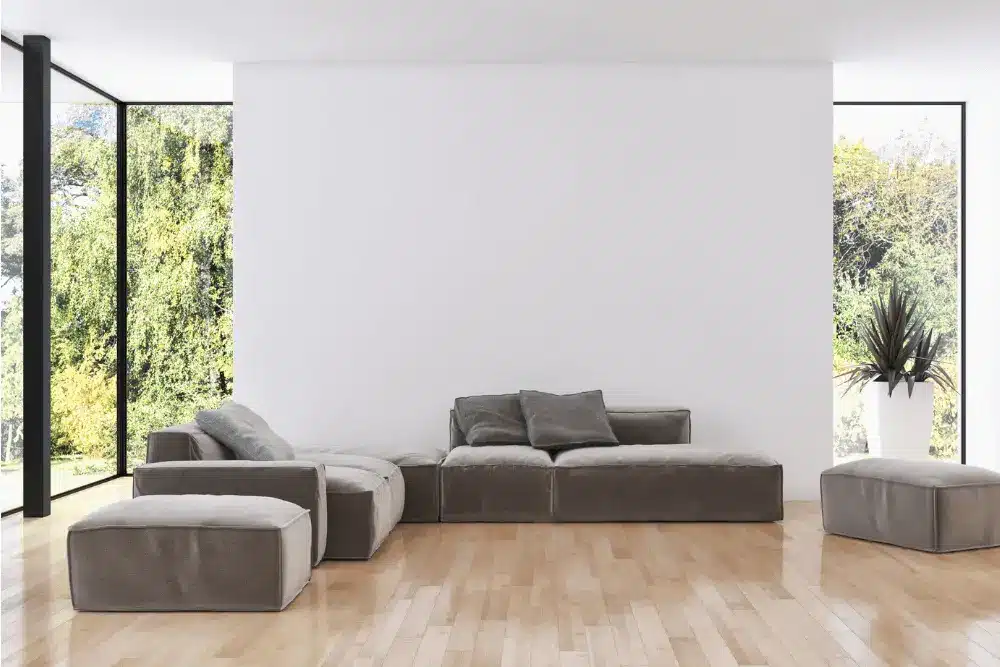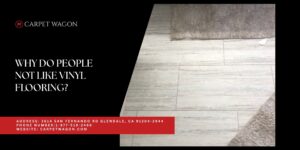Your home’s indoor air quality makes a difference when it comes to your family’s health and comfort. Ventilation and cleaning routines are important, but you shouldn’t overlook the impact of your flooring. Flooring materials can either contribute to a cleaner, healthier environment or introduce pollutants and allergens that affect air quality.
This guide explores how different flooring types influence air quality to help you make informed decisions for a healthier home.
Table of Contents
ToggleWhat Affects Indoor Air Quality?
Indoor air quality references the cleanliness and safety of the air you breathe inside your home. Flooring materials matter because some run the risk of releasing or trapping harmful substances.
Here are some of the harmful things flooring can release into the air:
- Volatile Organic Compounds (VOCs): Found in finishes, adhesives, and synthetic materials, VOCs can release gases into the air, causing irritation or long-term health risks.
- Dust and Allergens: Carpets and porous flooring materials can trap dust, pet dander, and pollen, contributing to allergies and asthma.
- Mold and Mildew: Moisture-prone flooring, especially in improperly ventilated areas, can foster mold growth.
How Flooring Types Impact Air Quality
Every type of flooring is different and affects your indoor quality in its own way. Here’s how popular options compare:
Hardwood Flooring
Hardwood flooring boosts your property value while giving your home a classic yet sophisticated aesthetic. Here’s what it does to your home’s air quality:
- Pros: Hardwood is naturally hypoallergenic and doesn’t trap dust or allergens. It’s easy to clean and maintain.
- Cons: Finishes and adhesives used in some hardwood products may emit VOCs. Opt for prefinished hardwood or low-VOC finishes to reduce emissions.
Carpet
Nothing feels better than stepping onto a soft, plush carpet. Although still a popular choice, it can impact your home’s air quality in the following ways:
- Pros: Modern carpets labeled as low-VOC are safer and more environmentally friendly. They provide warmth and comfort underfoot.
- Cons: Carpets can trap allergens, dust, and pet dander. Regular cleaning is necessary to maintain air quality.
Luxury Vinyl Plank (LVP)
Consisting of an image layer, strong core and wear layer, LVP is the definition of durability. However, you should think about how it alters your home’s air quality:
- Pros: LVP is durable, water-resistant, and easy to clean, making it an excellent choice for families. Low-VOC certified LVP products are widely available.
- Cons: Non-certified LVP may emit VOCs, so always look for FloorScore-certified options.
Tile (Ceramic or Porcelain)
Tile gives you a seemingly endless list of options. These moisture-resistant floors seem like they do it all, but how do they impact indoor air quality? Find out below:
- Pros: Non-porous and resistant to mold and allergens, tile is ideal for moisture-prone areas like bathrooms and kitchens. This makes it a perfect choice for kitchen and bathroom remodeling, ensuring durability, easy maintenance, and long-lasting beauty.
- Cons: Dirt and debris can collect in grout lines if not sealed properly.
Bamboo and Cork Flooring
There’s nothing better than getting new floors and saving the planet at the same time. Bamboo and cork floors can also impact your air quality. Here’s what you need to know:
- Pros: Eco-friendly, hypoallergenic, and naturally resistant to mold, bamboo and cork flooring contribute to better air quality.
- Cons: Ensure adhesives used during installation are low-VOC to avoid chemical emissions.

Tips for Choosing Air-Quality-Friendly Flooring
Now that we’ve learned about how each type of flooring affects indoor air quality, it’s time to discuss factors to keep in mind when purchasing new floors. Let’s dive in!
Opt for Certified Low-VOC Flooring
Look for certifications such as FloorScore or GreenGuard when purchasing hardwood, vinyl, or laminate flooring. These labels guarantee reduced chemical emissions.
Choose Hypoallergenic Materials
Opting for hardwood, bamboo, or ceramic tile to minimize allergen buildup. These materials resist dust, dander, and mold.
Avoid Moisture-Trapping Options
In high-moisture areas like bathrooms or basements, use water-resistant materials such as sealed tile or LVP to prevent mold growth.
Use Low-VOC Adhesives and Sealants
During installation, request low-VOC products to minimize chemical emissions. Professional installers can provide eco-friendly options for adhesives and finishes.
Maintain Regular Cleaning
- Vacuum with a HEPA filter to reduce allergens.
- Mop floors with eco-friendly, non-toxic cleaning solutions.
- Seal grout lines in tile flooring to prevent dirt buildup.
Buy New Floors and Breathe Better
Flooring choices influence the air quality in your home. By understanding the relationship between flooring materials and indoor air, you can make healthier decisions for your family.
Ready to breathe easier at home? Shop online with Carpet Wagon in Glendale, CA, or schedule an in-home consultation today. Let us help you create a healthier home!





